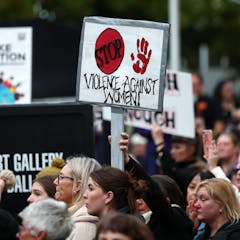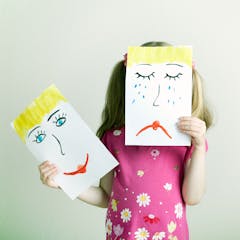
Articles on Family violence
Displaying 1 - 20 of 180 articles

Women who have moved to Australia, particularly from traumatic settings, are particularly at risk of gendered violence. Here’s what our research found helps them to speak up.

Australian laws fall well short of protecting women from an abusive partner’s debts by adopting a US law removing their liability.

Some countries closer to achieving gender equality still have high rates of domestic violence, but look a bit closer and you’ll see the full story.

New research shows police specialising in family violence are concerned current approaches leave victim-survivors unprotected.

Confiscating firearms from alleged abusers might seem like a good idea, but it’s unlikely to make much of a difference.

First Nations women are 32 times more likely to be hospitalised as a result of domestic violence than non-Indigenous women. We need to put Indigenous women at the centre of the discussion.

This is not the first time domestic violence has been declared a national crisis. Australian governments first got seriously involved in 1985. What can the past 40 years teach us?

A domestic violence disclosure scheme is a resource people can check to find out if a particular person has a documented history of domestic violence.

Public focus on, and anger about, the horrifyingly high rates of violence against women is at fever pitch. What have the country’s leaders agreed to, and will it fix the problem?

The government will introduce legislation to ban deepfake pornography and devote $925.2 million over five years to establish permanently a program with those eligible able to receive up to $5000.

Domestic violence is not just a critical social and health issue, but a major economic challenge for victim survivors and the nation.

Gender violence has captured the attention of policy makers and the public. There’s many things that can be done, both in the short and long term.

In her new memoir Hope, Rosie Batty reflects on her ‘absolute despair’ at our failure to protect women and children from gendered violence – and the personal toll of becoming an unlikely campaigner.

Half of the women homicide victims in 2022-23 were killed by a former or current partner.

Equal shared parental responsibility will no longer automatically be considered to be in a child’s best interest. That’s a good thing, particularly in domestic violence situations.

50 years ago, the first shelter for women experiencing domestic violence was established in Sydney. It’s opening was far from a ribbon-cutting affair, but it’s legacy is long and powerful.

Authorities across Australia and the UK are sounding the alarm about how data breaches have endangered domestic violence victim-survivors.

Childhood trauma can completely alter the trajectory of someone’s life, but for others, it barely affects them at all. After going through trauma, why do some people seem fine?

Elder abuse is common and can be devastating. New research has uncovered four key reasons older people do not seek the help they need with the abuse.

Some children and young people escape family violence, only to find themselves alone, homeless and in violent relationships. How can we support and protect these vulnerable adolescents?
